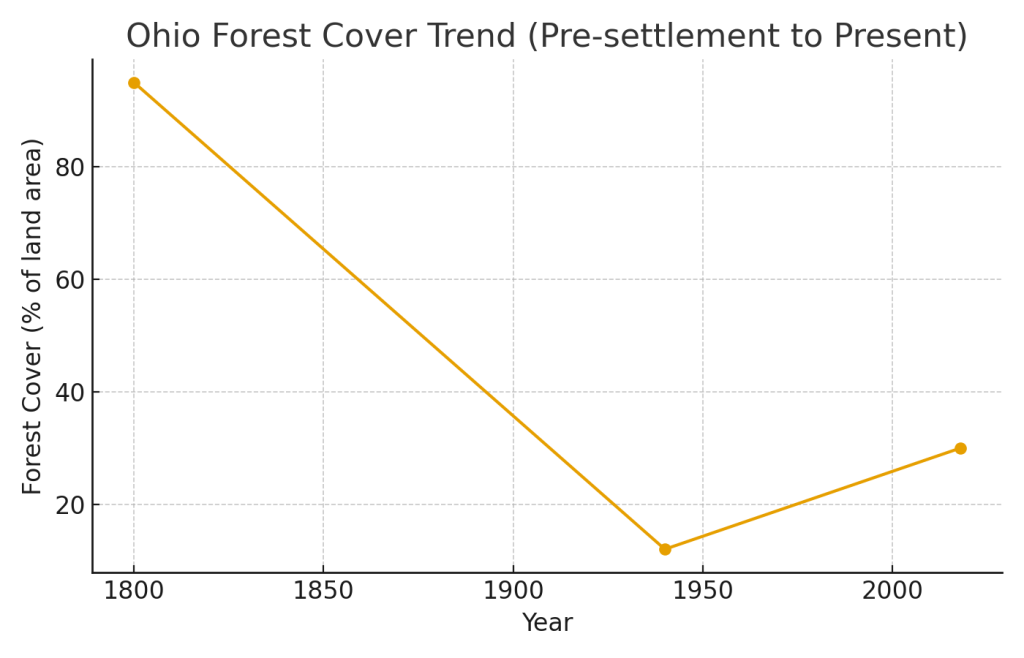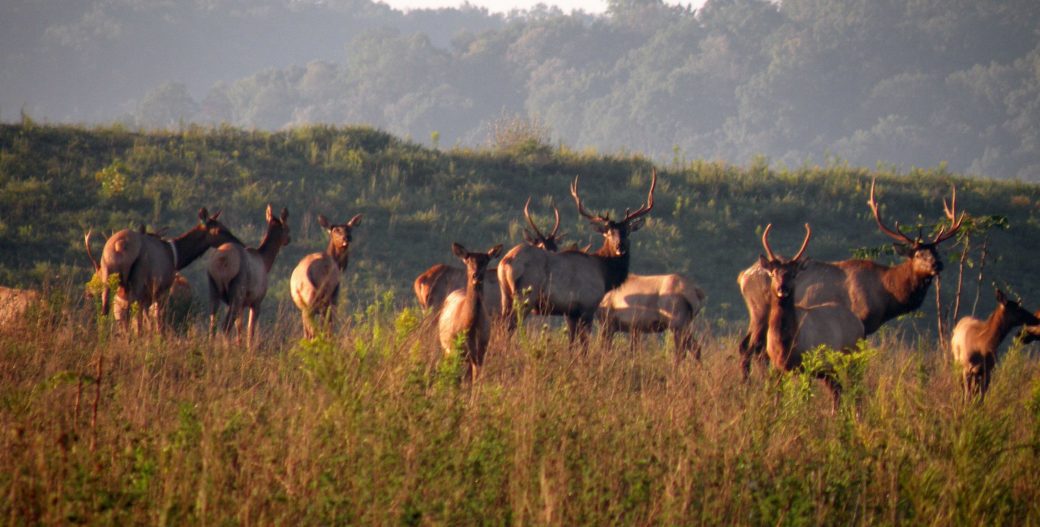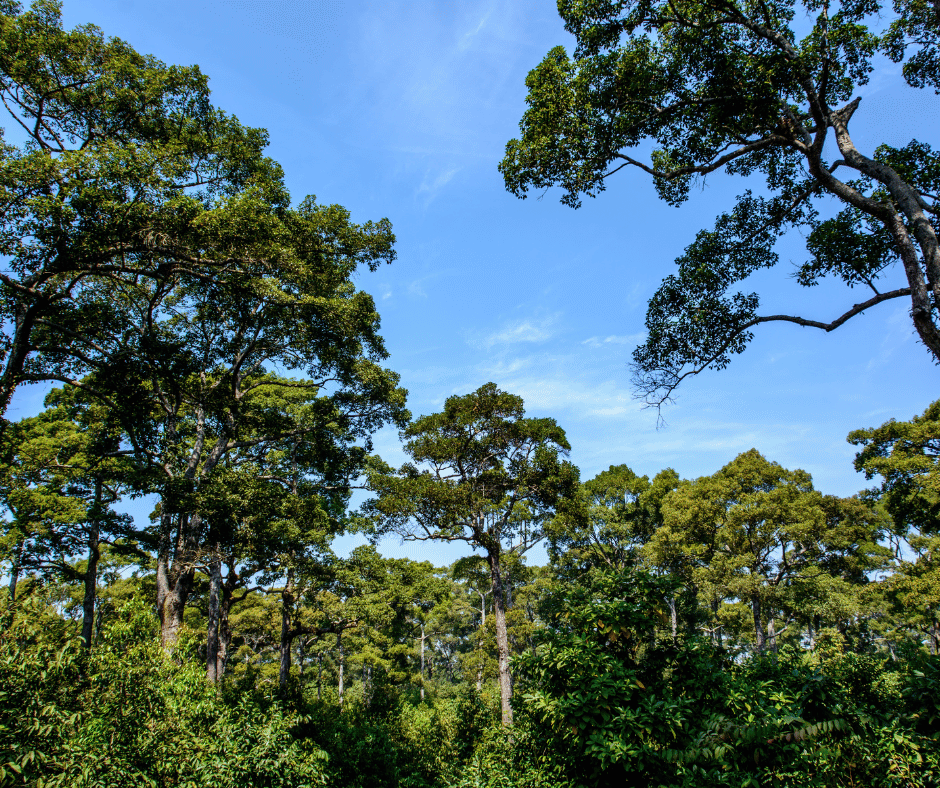Smart post-harvest projects can transform your woods: better wildlife habitat, safer access for hunters and hikers, and healthier hardwood stands—while positioning your timber for higher future value.
Why Habitat & Recreation Work Belongs on Your Post-Harvest Checklist
Ohio’s forest cover rebounded from roughly 12% in the 1940s to about 30% today, thanks to regeneration and better management—a long arc that continues on private lands like yours.[1]


1) Edge Feathering & Early-Successional Patches
Where woods meet fields or openings, “softening” hard edges by cutting and hinging low-value stems creates dense cover for deer and ground-nesting birds. Small, sunlit patches (¼–1 acre) kick-start shrubs and forbs that provide browse and insect forage. These early-successional spots are magnets for wildlife movement and can be refreshed on a 5–10 year cycle.
2) Mast & Nectar: Plant for Food Across the Season
Establish or release mast producers (white oak, red oak, chestnut, hickory) and add soft-mast shrubs (serviceberry, elderberry). Pair with pollinator strips along trails or log landings to boost insects that feed turkey poults and songbirds. Many of these practices are supported through EQIP cost-share when they address wildlife habitat goals.[2]
3) Invasive Species Knock-Back
4) Micro-Wetlands, Seeps & Riparian Buffers
5) Durable, Low-Maintenance Trails for Hunters & Hikers
Reuse skid trails as your permanent network: crown or out-slope to shed water, add broad-based dips or rolling grade breaks, and armor soft spots with slash or stone where appropriate. Good drainage preserves access and protects soils for future harvests (and future revenue).
6) Wildlife Structure: Brush Piles & “Snags”
Convert low-value tops and cull logs into layered brush piles for small mammals and songbirds. Retain safe standing dead trees (“snags”) for cavity nesters where hazards to people or trails are minimal.
7) Access, Staging & Safety
Ohio Timber Works: Regional, Sustainable, Results-Driven
Ohio Timber Works operates throughout Ohio and surrounding states. Our harvests are planned around long-term stand health and landowner goals. After cutting, we can help you prioritize the habitat and recreation projects that add value now and set up your next generation of hardwoods. Learn more about our approach to responsible logging and see how thoughtful harvest plans improve regeneration and recreation from day one.
Ohio Forest Cover Trend

The recovery we’ve experienced underscores why post-harvest work matters: private landowners drive habitat quality at landscape scale in Ohio.
Cost-Share & Technical Help (For Habitat Projects)
- NRCS EQIP (Ohio): Financial and technical assistance for practices such as edge feathering, pollinator habitat, riparian buffers, and wildlife structure.[2], [6]
- H2Ohio (ODNR & partners): Strategic wetland/riparian projects that improve water quality and habitat; periodic grant rounds and partner initiatives.[3]
90-Day Sequencing Guide (What to Tackle First)
- Week 0–2: Walk the stand, map invasives, identify edge zones and potential early-successional patches; flag wet spots and crossings.
- Week 2–6: Drainage touch-ups on former skid trails; rough in broad-based dips; place slash on soft stretches.
- Week 6–10: Edge-feather 200–400 linear feet per opening; create 1–2 small patches; build 2–4 layered brush piles per acre of opening.
- Week 10–14: Plant or release mast trees; install trailhead signage; seed pollinator strips on landings and sunny verges.
- Week 14–18: Target invasives with cut-stump or foliar follow-up; re-visit drainage after first heavy rain; photo-monitor success.
Ready to Improve Your Woods?
References
- Ohio Department of Natural Resources, Forest Resource Assessment (2020) — historical forest cover and current acreage. ODNR PDF
- USDA NRCS, Environmental Quality Incentives Program — Ohio. NRCS Ohio EQIP
- ODNR & State of Ohio, H2Ohio wetlands & riparian initiatives. H2Ohio Grants
- USFS Forest Inventory & Analysis, Forests of Ohio, 2019. USFS FIA 2019
- USFS Forest Inventory & Analysis, Forests of Ohio, 2020. USFS FIA 2020
- USDA NRCS, EQIP Program Overview. NRCS EQIP (National)


